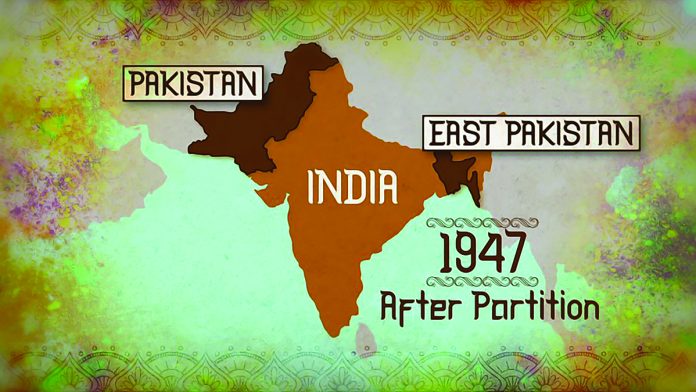Interaction Team
The dawn of August 14, 1947, marked the culmination of a long and arduous struggle. The creation of Pakistan, under the inspiring leadership of Quaid-e-Azam Muhammad Ali Jinnah, was a monumental achievement, born from the dreams and sacrifices of millions.
However, as the celebrations of independence subsided, Pakistan faced the overwhelming challenges of transforming a newly formed state into a functional and thriving nation. The period from 1947 to 1949 would be defined by the country’s intense struggle to establish stability, preserve sovereignty, and build the foundations of a future on the principles for which it was created.
The partition of British India left an indelible mark on the subcontinent. The hurried demarcation of borders by the Radcliffe Award led to one of the largest mass migrations in human history. Nearly 15 million people were displaced as Hindus and Sikhs moved to India, and Muslims migrated to Pakistan. The violence accompanying this migration claimed hundreds of thousands of lives and created an unparalleled humanitarian crisis.
The refugee crisis: Pakistan, barely days old, was inundated with nearly 10 million Muslim refugees fleeing violence and persecution. Karachi, Lahore, and several cities of Punjab were overrun with camps and settlements. The newly formed government faced immediate challenges in providing food, shelter, and medical care to this displaced population.
Disease outbreaks such as cholera and typhoid spread rapidly in the refugee camps, compounding the crisis. Quaid-e-Azam Jinnah issued urgent directives for the resettlement and care of the refugees, emphasizing that they must be treated with dignity and compassion.
Following partition, the division of assets between India and Pakistan proved to be a major sticking point. Pakistan, a state with limited resources and infrastructure, received only 17.5% of the assets of undivided India, including financial reserves, military equipment, and government infrastructure.
The Indian government delayed the transfer of Pakistan’s due share of assets, further crippling the fledgling state’s economy. Jinnah and Liaquat Ali Khan’s persistent negotiations led to the eventual disbursement of funds, but the delays had already caused significant economic hardship.
The financial difficulties were further compounded by the lack of a proper banking system. Pakistan initially used Indian rupees, with an over stamp marking them for use in the new state. In 1948, the Government of Pakistan issued its own currency to establish fiscal autonomy. The establishment of the State Bank of Pakistan in July 1948 was a pivotal moment in consolidating the economic structure of the country, providing a central authority for monetary policy and banking regulation.
The administrative framework of the new country was severely underdeveloped. Pakistan inherited a small, largely agrarian economy with limited infrastructure and an underdeveloped industrial base. The regions that formed Pakistan East Bengal (later Bangladesh), West Punjab, Sindh, Balochistan, and Khyber Pakhtunkhwahad few administrative facilities, as most civil servants chose to stay in India.
Pakistan’s bureaucracy, a skeletal structure at best, had to be rebuilt from the ground up. Many of the civil servants who chose to migrate from India had to be integrated into a system that lacked proper facilities, training, and organization. Quaid-e-Azam Muhammad Ali Jinnah, as Governor-General, led efforts to build the administrative machinery of the state, often personally involving himself in decisions to stabilize governance.
In addition to civil administration, Pakistan inherited a fragmented military force. The partition had divided the British Indian military between the two countries, but Pakistan received a smaller share of equipment and officers. General Sir Frank Messervy was appointed the first Commander-in-Chief of the Pakistan Army, tasked with integrating the new forces and preparing them for defense in a volatile regional environment. The military’s lack of resources became a critical issue, particularly as tensions with India escalated over Kashmir.
The most significant territorial dispute between Pakistan and India erupted almost immediately after independence: the Kashmir conflict. The princely state of Jammu and Kashmir, ruled by Maharaja Hari Singh, was predominantly Muslim but had not acceded to either India or Pakistan.
In October 1947, after tribal militias from Pakistan’s northern areas entered Kashmir in support of the local population’s desire to join Pakistan, the Maharaja sought military assistance from India, which led to his controversial decision to accede to India. India responded by sending troops into Kashmir, leading to the first war between the two newly independent states.
The conflict over Kashmir soon became a full-scale military engagement. Pakistan’s armed forces, under-equipped and in the midst of structural organization, faced a daunting challenge. Despite this, Pakistan managed to retain control over a portion of Kashmir (now known as Azad Jammu and Kashmir). A ceasefire was brokered by the United Nations in 1949, establishing a temporary Line of Control (LoC) but leaving the Kashmir issue unresolved. The Kashmir conflict drained Pakistan’s resources and became a focal point of its foreign policy and military strategy for decades to come.
While grappling with territorial disputes and economic hardship, Pakistan was also tasked with defining its identity as a nation. The Constituent Assembly convened to draft the country’s first constitution, but the process was fraught with ideological disagreements. Quaid-e-Azam’s vision for a secular, inclusive Pakistan clashed with the growing demands for an Islamic state.
Under Prime Minister Liaquat Ali Khan’s leadership, the Constituent Assembly adopted the Objectives Resolution in 1949. This landmark document outlined the principles upon which Pakistan’s constitution would be based, declaring that sovereignty over the entire universe belongs to Allah, and that the authority to be exercised by the people of Pakistan within the limits prescribed by Him is a sacred trust.
It sought to balance Islamic principles with democratic governance, paving the way for future constitutional development. The Objectives Resolution remains a cornerstone of Pakistan’s constitutional and ideological framework.
The death of Quaid-e-Azam Muhammad Ali Jinnah on September 11, 1948, was a devastating blow to Pakistan. Jinnah had been the driving force behind the creation of the state and the chief architect of its early development.
His absence left a leadership vacuum, and the responsibility of guiding Pakistan through its formative years fell to Prime Minister Liaquat Ali Khan. Liaquat, an astute statesman, worked tirelessly to carry forward Jinnah’s vision, focusing on economic reforms, diplomatic efforts, and the integration of diverse ethnic and religious groups into a unified national identity.
Despite the turbulence of these years, Pakistan began to establish its cultural and social identity. The refugee influx transformed cities like Karachi and Lahore into hubs of cultural and intellectual activity. Writers, poets, and artists who had migrated from India began contributing to Pakistan’s nascent literary and artistic scene, with figures like Faiz Ahmed Faiz and Saadat Hasan Manto gaining prominence.
Karachi, the initial capital of Pakistan, quickly developed into a cosmopolitan city, hosting government offices, refugee settlements, and commercial enterprises. The city’s port became a vital lifeline for the country’s trade and economic development. The urbanization of Karachi marked the beginning of Pakistan’s industrial growth, even as the rest of the country remained largely agrarian.
The years from 1947 to 1949 were a time of unprecedented hardship for Pakistan. The country faced challenges on multiple fronts: political, economic, and military. Yet, the resilience of its leadership and people ensured that the new state survived and began to consolidate its position on the world stage.
As Pakistan navigated these formative years, it laid the foundations for its future as a sovereign, independent, and resilient nation. The sacrifices made during this period were immense, but they were necessary steps in Pakistan’s journey toward stability and prosperity… (Continue…)







